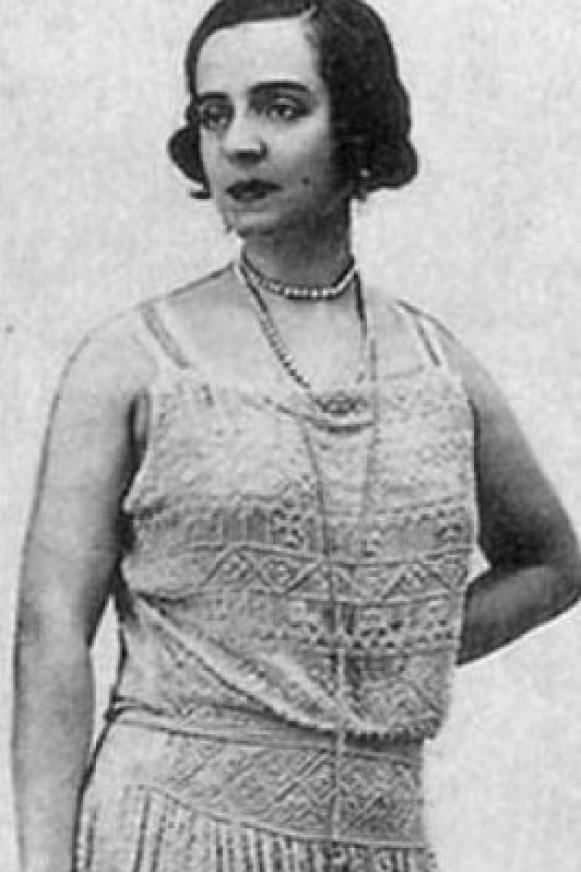"That Woman Was Really Sweet": The Italian Serial Killer Who Turned Her Victims Into Soap & Cake

Wikimedia Commons
CORREGGIO, ITALY — In 1939, Italian serial killer — and mother of four — Leonarda Cianciulli, better known as the “Soap-Maker of Correggio,” is alleged to have murdered three women, and then cut up their bodies and turned them into soap and teacakes.
Cianciulli was born in 1894 in the southern Italian town of Montella. In the 1930s, she was married and running a small shop in the northern town of Correggio. Friends and neighbors considered her a kind and doting mother to her four children.
She was also extremely protective of them. Cianciulli had reportedly been pregnant 17 times during her marriage, but lost three of the children to miscarriage — and had 10 more die in their youth.

Wikimedia Commons
Leonarda Cancuilli in her youth
This made her extremely superstitious, especially after a fortune teller told her that all four of her surviving children would die young. When a gypsy convinced her that the only way to protect her four children was with a human sacrifice, she apparently believed her.
Between 1939 and 1940 she lured three middle-aged women into her little shop, drugged them, killed them with an ax, and then disposed of their bodies by boiling them in caustic soda.
She targeted her first victim, Faustina Setti, after her son Giuseppe was called to serve in World War II. Setti, a lifelong spinster, came to Cianciulli for help in finding a husband. Cianciulli convinced her that she had found a suitable mate in the town of Pola.
Then, the day Setti was due to depart, Cianciulli offered her a glass of drugged wine, then killed her with an ax and dismembered the body. Cianciulli then used the soda, which is very effective at digesting grease and fat, to break down her victim’s body.
In her memoir, An Embittered Soul’s Confessions, Cianciulli described what happened next in her official statement:
“I threw the pieces into a pot, added seven kilos of caustic soda, which I had bought to make soap, and stirred the whole mixture until the pieces dissolved in a thick, dark mush that I poured into several buckets and emptied in a nearby septic tank.
As for the blood in the basin, I waited until it had coagulated, dried it in the oven, ground it and mixed it with flour, sugar, chocolate, milk and eggs, as well as a bit of margarine, kneading all the ingredients together. I made lots of crunchy tea cakes and served them to the ladies who came to visit, though Giuseppe and I also ate them.”
Francesca Soavi was the second victim, and Cianciulli used the same modus operandi — she once again claimed to have found her something wonderful in a distant town. This time, Cianciulli said she had found Soavi a job at a school for girls in Piacenza. Again, on the day of Soavi’s supposed departure Canculli gave her drugged wine, hacked her up with an ax, and turned her into soap. She also reportedly obtained 3,000 lire from this second victim.
Cianciulli’s final victim was Virginia Cacioppo, a former soprano for whom Cianciulli claimed to have found a secretarial job in Florence. As with the two previous victims, Cianciulli made her promise that she would not tell anyone about her new “job.”
On September 30, 1940, Cacioppo came for a last visit with Cianciulli, and was killed in exactly the same manner. According to Cianciulli’s official statement:
“She ended up in the pot, like the other two … her flesh was fat and white, when it had melted I added a bottle of cologne, and after a long time on the boil I was able to make some most acceptable creamy soap. I gave bars to neighbours and acquaintances. The cakes, too, were better: That woman was really sweet.”
From this final victim, Cianciulli reportedly received 50,000 lire and assorted jewels.
But Cacioppo’s sister-in-law had last seen her entering Cianciulli’s house, and reported her disappearance to police. Cianciulli was arrested, and provided detailed confessions of her crimes.
At her murder trial in 1946, observers noted that she seemed unrepentant as she described how she turned her victims into cleaning products and desserts.
She was found guilty of her crimes and sentenced to 30 years in prison and three years in a criminal asylum. She died of cerebral apoplexy in the women’s criminal asylum in Pozzuoli on October 15, 1970.
A number of artifacts from the case, including the pot in which the victims were boiled, are on display at the Criminological Museum in Rome.
Read more:
BBC






![Ed Gein, also known as 'The Butcher of Plainfield,' was a convicted serial killer and a grave-robber. [via Discovery Inc.]](http://investigationdiscovery.sndimg.com/content/dam/images/investigationdiscovery/crimefeed/legacy/2021/04/ed-gein-the-real-psycho.png.rend.hgtvcom.231.174.suffix/1617820474672.png)


